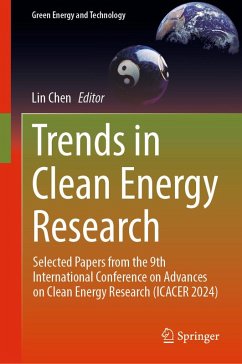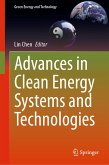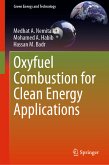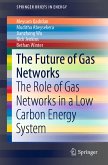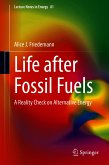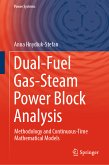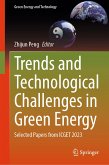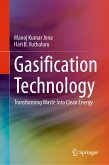Trends in Clean Energy Research (eBook, PDF)
Selected Papers from the 9th International Conference on Advances on Clean Energy Research (ICACER 2024)
Redaktion: Chen, Lin


Alle Infos zum eBook verschenken

Trends in Clean Energy Research (eBook, PDF)
Selected Papers from the 9th International Conference on Advances on Clean Energy Research (ICACER 2024)
Redaktion: Chen, Lin
- Format: PDF
- Merkliste
- Auf die Merkliste
- Bewerten Bewerten
- Teilen
- Produkt teilen
- Produkterinnerung
- Produkterinnerung

Hier können Sie sich einloggen

Bitte loggen Sie sich zunächst in Ihr Kundenkonto ein oder registrieren Sie sich bei bücher.de, um das eBook-Abo tolino select nutzen zu können.
This book offers a comprehensive exploration of the latest novel and fundamental advances in clean energy resources and systems, energy economics, and energy policy. Designed to help steer the course toward a cleaner, more sustainable energy landscape, it presents case studies on clean energy technology, explores sustainable methods for increasing energy efficiency, and examines current concepts and solutions to global energy storage and energy-saving issues. Topics covered include:
Clean coal and fossil fuels; | Green power production and cogeneration; | CO2 capture, storage, and…mehr
- Geräte: PC
- ohne Kopierschutz
- eBook Hilfe
- Größe: 17.89MB
![Advances in Clean Energy Systems and Technologies (eBook, PDF) Advances in Clean Energy Systems and Technologies (eBook, PDF)]() Advances in Clean Energy Systems and Technologies (eBook, PDF)105,95 €
Advances in Clean Energy Systems and Technologies (eBook, PDF)105,95 €![Oxyfuel Combustion for Clean Energy Applications (eBook, PDF) Oxyfuel Combustion for Clean Energy Applications (eBook, PDF)]() Medhat A. NemitallahOxyfuel Combustion for Clean Energy Applications (eBook, PDF)97,95 €
Medhat A. NemitallahOxyfuel Combustion for Clean Energy Applications (eBook, PDF)97,95 €![The Future of Gas Networks (eBook, PDF) The Future of Gas Networks (eBook, PDF)]() Meysam QadrdanThe Future of Gas Networks (eBook, PDF)40,95 €
Meysam QadrdanThe Future of Gas Networks (eBook, PDF)40,95 €![Life after Fossil Fuels (eBook, PDF) Life after Fossil Fuels (eBook, PDF)]() Alice J. FriedemannLife after Fossil Fuels (eBook, PDF)69,95 €
Alice J. FriedemannLife after Fossil Fuels (eBook, PDF)69,95 €![Dual-Fuel Gas-Steam Power Block Analysis (eBook, PDF) Dual-Fuel Gas-Steam Power Block Analysis (eBook, PDF)]() Anna Hnydiuk-StefanDual-Fuel Gas-Steam Power Block Analysis (eBook, PDF)73,95 €
Anna Hnydiuk-StefanDual-Fuel Gas-Steam Power Block Analysis (eBook, PDF)73,95 €![Trends and Technological Challenges in Green Energy (eBook, PDF) Trends and Technological Challenges in Green Energy (eBook, PDF)]() Trends and Technological Challenges in Green Energy (eBook, PDF)121,95 €
Trends and Technological Challenges in Green Energy (eBook, PDF)121,95 €![Gasification Technology (eBook, PDF) Gasification Technology (eBook, PDF)]() Manoj Kumar JenaGasification Technology (eBook, PDF)89,95 €
Manoj Kumar JenaGasification Technology (eBook, PDF)89,95 €-
-
-
- Clean coal and fossil fuels;
- Green power production and cogeneration;
- CO2 capture, storage, and utilization;
- Biomass, wind, and nuclear energy engineering;
- Hydrogen and fuel cell technology.
Trends in Clean Energy Research is an essential guide to current research for scientists, practitioners, engineers, students, and researchers.
- Presents cutting-edge research on clean energy technologies and systems;
- Examines solutions to global energy storage issues;
- Includes case studies.
Dieser Download kann aus rechtlichen Gründen nur mit Rechnungsadresse in A, B, BG, CY, CZ, D, DK, EW, E, FIN, F, GR, HR, H, IRL, I, LT, L, LR, M, NL, PL, P, R, S, SLO, SK ausgeliefert werden.
- Produktdetails
- Verlag: Springer International Publishing
- Seitenzahl: 282
- Erscheinungstermin: 20. September 2024
- Englisch
- ISBN-13: 9783031679872
- Artikelnr.: 71771708
- Verlag: Springer International Publishing
- Seitenzahl: 282
- Erscheinungstermin: 20. September 2024
- Englisch
- ISBN-13: 9783031679872
- Artikelnr.: 71771708
- Herstellerkennzeichnung Die Herstellerinformationen sind derzeit nicht verfügbar.
